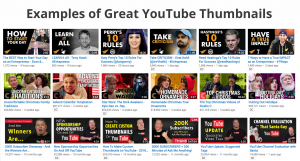
Digital video has exponentially increased in popularity over the years, and its growth shows no sign of slowing down anytime soon. In fact, 55 percent of all consumer internet traffic will come from digital video views by 2016, according to a report by Cisco. Because of this, marketers are scrambling to create branded content that can reach this large audience and spread their message.
Picture this: one-third of all online advertising spending will come from video production over the next five years. Online video is quickly becoming a lucrative medium, but also a congested one. As consumers cut their cords, marketers and advertisers are moving towards creating branded video entertainment, over saturating the web with a wide variety of premium content.
Although this is great news for consumers who are tired of obvious advertising, it creates a discovery problem. Making your video stand out in the internet ‘content jungle’ can be a daunting task. However, it doesn’t necessarily have to be that way. Stick to these few, vital SEO tips, and your video content will rise above others like a phoenix from the ashes, and dominate major search engines.
Use Killer Keywords
Assigning keywords is one of the simplest, but most important tasks when posting a video. Like with a blog post or article, keywords will make your video more visible. This is important because you want bots to know exactly what your video is about. Implementing effective keywords will help place your content in relevant searches.
Before choosing keywords, pick the search engine you want to promote your video on and then double-check to see how the words you’re considering rank. YouTube will most likely give you a higher ranking given the medium, but it’s possible to also get a high ranking on Google too. To check, go to Google and see if it shows the same first-page results for the same keyword you chose for YouTube. If it is, assign that sucker to your video and watch the views roll in.
Tag It Up
Like keywords, tags help bots categorize your video so targeted audiences can find them quicker. However, tags don’t necessarily need to be reflective of the content. Tags can represent anything within the video.
For example, say you own an ad tech company that offers a PPC product, a fraud protection platform, and a pay-per-call service. You could make one video that highlights all three of these solutions and drives views from a variety of sources. As long as you assign PPC, ad fraud, and pay-per-call as tags, it’s likely that your content will show up in search results for each of them.
Think of an Effective Title
Before search engines, creating titles was all about coming up with something eye-catching that would spark interest. Nowadays, cleverly-named content is hidden several pages deep in search results because search engines are all about relevant keywords. Bots have no sense of humor or appreciation for wit; they’re just looking for keywords so they can deliver users appropriate results.
To have an effective title, it’s important that you include your keyword as early as possible. Say you’re creating a video that teaches tips on how to improve your basketball dribbling. Make the title “Dribble like a Pro in 5 Steps” instead of “5 Steps to Dribble like a Pro.” It also helps to incorporate popular keywords that attract attention in search results. Some good ones to consider are “how to,” “about,” and “review.”
Upload a Transcript
Although this can be a lot of work, the results are worth it. By fully transcribing your video, you’re providing search engines with more content to crawl through. And your SEO efforts will get a significant boost since search engines read interactive transcripts. The folks over at Moz do a fantastic job of transcribing videos like this one for their Whiteboard Friday feature.
When uploading transcripts, you also have the option to add captions. This won’t provide any extra SEO push, but it is quite helpful in reaching out to wider audiences. With captions, your video will become more accessible to those who speak different languages, and to people with hearing issues. As a result, your video will be watched by a broader audience.
Create a Sitemap
Now that video traffic is flowing in, a business owner will want to take that YouTube channel traffic and use it to direct viewers to their website. Using sitemaps is the best way to ensure this happens. As opposed to ranking your YouTube content high on SERPs, sitemaps help inform bots that your video is being hosted on your website. As a result, the link to the video on your site ranks higher, directing interested viewers to your web page.
Although this is more beneficial for businesses, the process is much more complicated than uploading videos to YouTube and assigning keywords. In order to be done correctly, you need to follow specific guidelines and sitemap protocol. Specific step-by-step instructions on how to do this can be found here.
Conclusion
Unfortunately, hundreds and thousands of incredible online videos go unnoticed every day. If you’re not using the right keywords, creating effective titles, or properly tagging your content, it’s likely your videos will never be seen by the right audience. For your productions to shine, you need to implement these SEO tactics otherwise your videos will become lost in the internet’s vast sea of content.
(290)









